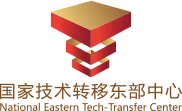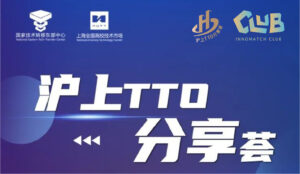Technology transfer is an important way of technology transfer and plays an irreplaceable role in promoting the transformation of achievements. Technology shareholding can combine the technology and capital of universities and research institutes with high efficiency, rapidly establish start-up companies, and industrialize and market the scientific research achievements. In recent years, the state has introduced a series of policies related to the transfer of achievements, making the technology shareholding method of transformation gain attention, but at present, China's technology shareholding still faces obstacles in state-owned asset management, governance structure, equity incentives and taxation, which need to be further explored and solved. The purpose of this paper is to investigate the forms, related policies and existing problems of technology shareholding in China, and give countermeasures and suggestions for exploring technology shareholding transaction mechanisms.
Definition of Technical Admissions
In the process of technology transaction, the technology holder sells the right to use or ownership of the technology to the enterprise, and the enterprise transfers its own equity to the technology transferor as a means of payment, which is a result transfer mechanism. After the technology results in shareholding, the technology contributor acquires the status of shareholder, and the corresponding property right of the technology results is transferred to the enterprise.
Forms of technology stockholding
Complete transfer of ownership
The form of full transfer of ownership is that the technological achievements of the university are evaluated and converted into an equity investment, and the enterprise acquires the technological innovation entirely. The original holder of the technological innovation becomes one of the shareholders of the enterprise with the technological input and can act as a shareholder of the relevant technology.
Technical experts, but no longer have ownership rights over the technology.
Transfer of partial ownership can
The intangible nature of technological innovations gives a certain relative independence to the various components of ownership. If the holder of the original technological innovation surrenders its shares, it may draw back its ownership and use rights, resulting in a form of technology transaction that transfers part of the ownership. This is usually agreed upon at the time of the formation of the investment agreement.
No transfer of ownership
Technology transactions that transfer only the right to use and do not result in a transfer of ownership. With the trend towards rapid technological development and innovation, firms wishing to gain access to leading-edge technologies in order to start production quickly usually adopt the form of a technology transaction that transfers only the right to use the technology when the partners contribute financially with monetary capital and technical innovations, respectively.
Since the transfer of ownership of technological results is much more expensive than the transfer of the right to use them, on the one hand, owners of technological innovations are reluctant to fully transfer the technology, and on the other hand, technology funders in the form of equity ownership are less economically viable for other investors, many of whom only want the right to use the technology in question. Therefore, technology equity forms of full transfer of ownership are not common.
The importance of technology ownership
Technology shareholding is a kind of both incentives and restrictions on the transformation of scientific and technological achievements mode, is conducive to the formation of clear property rights, reasonable remuneration for the transfer of results of the mechanism.
- Technology shareholding helps motivate researchers to transform their resultsThe system of property rights is the core of the transformation of achievements. The property right system is the core of the transformation of results, and through technology shareholding, it is conducive to the formation of interest ties between industry, universities and research institutes, establishing a long-term cooperation mechanism and becoming a community of interests. Technology shareholding can link technology enterprises closely with universities and research institutes, forming a solid and effective technology alliance. As the interests are closely related, all parties will strive to contribute to the successful transformation of the results, making their own equity holdings to gain the maximum benefits. For universities and research institutes, technology shareholding is an important way to solve the motivation mechanism for technology inventors to participate in the transformation of the results.
- Technology equity is a natural consequence of the transformation of results.In a technology transaction, the firm bears more risk as a technology demand side, and there may be a lot of complex work after the technology is developed. In addition, there is also a large uncertainty as to whether the technology subject purchased by the enterprise will eventually result in revenue. One of the main obstacles to the transformation of results is the lack of maturity of the technology, and the technology still needs to be re-developed in the process of practical application, or even piloted and engineered, which often leads to the main obstacle that makes it difficult for the two parties of the technology transaction to reach a consensus. The technology shareholding can enable the technology demand side to further deepen the implementation of research and development results, laying the foundation for the industrialization of research results.
- Technology equity is an important way to combine technology and capital.Technology equity helps to create an assessment of the value of intangible assets such as technology. Technology suppliers are transformed into capital through technology equity, and technology demanders acquire technology through the sale of equity, reducing the burden of unnecessary cash flow. Technology shareholding enables the organic combination of technology and capital, creating favorable conditions for technology to enter the multi-level capital market. The formation of joint-stock companies through technology shareholding, through listing, etc., enables technology to achieve greater potential returns in the future.
Policies related to technology transfer
In 2015 and 2016, corresponding policies to promote the transformation of results were introduced at the national level, in which universities and research institutes were explicitly encouraged to take equity shares in high-tech enterprises and the majority of technology-based SMEs with the price of scientific and technological achievements. Shanghai, led by the policy, has already actively carried out the relevant practice of technology shareholding.
Existing problems with technology integration
- Complex and inefficient approval and filing procedures for technology shares
In recent years, scientific researchers, science and technology managers, investors and some NPC deputies and CPPCC members generally reflect the problem of complicated approval procedures for technology shares. Among them, NPC deputy Liu Chuanzhi "on the industrialization of science and technology issues and recommendations" mentioned: central research institutes to scientific and technological achievements in shares, approval procedures are complicated, affecting the efficiency. Some scientific research workers believe that technical intangible assets and physical assets are really different, the existing state-owned asset management procedures do not meet the characteristics of technical intangible assets. CPPCC member Huang Boyun proposed in his proposal on regulating the disposal of intangible assets and promoting the development of strategic industries to formulate relevant management policies based on the characteristics of technology-based intangible assets. In the field survey conducted by the Ministry of Education, we also found that: 71.24% scientific researchers believe that the lack of clarity in the legal responsibilities for the transfer of state-owned intangible assets and investment in shares, complicated procedures and long cycles are the main obstacles to the institutional mechanism for the transformation of scientific and technological achievements.
- Income tax on unearned gains
The tax authorities require the payment of income tax on the assessed value of intangible assets that are sold as shares. When the trading of scientific and technological achievements as shares occurs, the owners of scientific and technological achievements do not immediately get the benefits, but also need to pay high taxes, in reality, many researchers and units can not afford; In addition, the winners of awards in the form of shares or equity shares, such as the proportion of capital contribution, according to the shares, the proportion of dividends, or in the transfer of equity income, should also pay personal income tax in accordance with the law. The problem of taxation on technology shares leads many researchers to prefer a one-time transfer of technology at a low price rather than long-term cooperation in the form of shares, which is not conducive to the connection of enterprises with scientific and technological achievements and the transformation of scientific and technological achievements.
- Low equity incentive ratios and allocations
Equity incentive ratio and distribution amount is the university, research institutions, asset management department audit focus on the issue. At present, the relevant national laws and regulations stipulate that the scientific and technological achievements are priced as shares, and scientific and technological personnel can be rewarded with shares not less than the priced amount of 20%, and those exceeding 50% should be discussed and approved by the staff congress. However, the asset management department has the audit standard is the proportion of reward to individuals not more than 30%, universities, research institutions that this proportion is low, not conducive to mobilize scientific and technical personnel into the enthusiasm of scientific and technological achievements.
In the practice of Shanghai universities, although universities have increased the range of incentives, including technology shares and equity or options. For example, the East China University of Science and Technology has a favorable policy of "job inventions as equity, the results of the completion of the occupancy of technology shares of 50-70%", the Shanghai Institute of Technology R & D team was awarded the share of terahertz research shares in the 80%, Shanghai Maritime University "fiber optic sensing", and the Shanghai University of Technology's "optical fiber sensing". However, these policies still have the problem of "implementation difficulties" in actual implementation: on the one hand, technical intangible assets should be evaluated before taking shares, and once evaluated, they belong to the state assets, according to the current policy, it is difficult to implement the proportion of the part of the policy that exceeds 50% in the university's own policy to individuals; on the other hand, for the central universities, the proportion of 50%-70% exceeds the current regulations of the Ministry of Education, and it is difficult to get approval for submission. Another concern is that many universities have raised the upper limit of the proportion of individual awards to 70% in their policies, but lack the incentive for the inventor's department or laboratory. As a result, some scientists are dissatisfied with even this reward allocation ratio and it is difficult to implement it.
- Technology equity pricing exemptions
According to the Chinese Company Law and the provisions of the Ministry of Finance on the management of State-owned assets, non-monetary property that is contributed as capital should be evaluated for valuation. At present the implementation of the "People's Republic of China to promote the transformation of scientific and technological achievements" some provisions proposed: the transformation of scientific and technological achievements in the process, through the technology trading market listing, auction and other ways to determine the price, or through the agreement pricing and announced in the unit and the technology trading market proposed transaction prices, unit leaders in the implementation of due diligence obligations, no illegal profits, under the premise of the premise, exempted from the pricing of scientific and technological achievements. The responsibility for decisions arising from subsequent changes in the value of S&T conversions. However, university leaders still wish to transfer the responsibility for valuation to a third party out of concern for personal development and risk acceptance.
Technology Acquisition Response and Recommendations
- Simplify the approval process and implement indirect income tax benefits
Establish a state-owned asset management procedure in line with the characteristics of technology-based intangible assets, and improve the management system of technology shareholding. Simplify the approval process of technology shareholding, it is suggested that for the transformation of technological achievements in the form of technology shareholding in Shanghai, the approval should be liberalized within a certain amount and only be filed afterwards, or the approval process should be simplified and a green filing channel should be opened for the technology of the transaction.
To address the problem of the low willingness of researchers in universities and research institutions to take technology shares, it is proposed that tax exemptions or tax incentives be introduced for researchers in technology share transactions, and that taxes be levied only when their shares are transferred for actual gains.
- Establishing a platform to provide regulation of technology buy-in transactions and related services
With the support of existing policies related to the non-transfer of the proceeds of shareholding to the state treasury, non-transfer of social security, simplified approval of state-owned shareholding, encouragement of universities and research teams to take responsibility in technology transfer, and increasing the importance of technology transfer work, the degree of equity incentives will be raised and a clear equity distribution plan will be formulated. The use of equity mergers and acquisitions and other means to ensure continuous research and development capabilities in the process of technology transactions or transfers, in the whole industry chain of technological innovation to achieve technology to team to equity mergers and acquisitions development model.
Establishing a platform to monitor junior equity at the start-up stage of industrial innovation and providing equity transaction services to non-listed technology companies (including in-depth information disclosure services, due diligence services for equity transactions and mergers and acquisitions, advisory services on equity incentives, assistance in formulating equity and dividend incentive plans, etc.).
- Improving the valuation and pricing mechanism for technology-based intangible assets
To address the problem that university leaders are reluctant to assume the responsibility of pricing deviation and the lack of relevant normative basis for the evaluation standard of technical intangible assets, it is suggested that Shanghai technology trading platform can establish the evaluation and pricing standard and procedure of technical intangible assets jointly with asset evaluation firms, universities and other experts to help universities assume the corresponding pricing responsibility.
At the same time, in conjunction with the capital verification system, the legal liability of the negotiated price is strengthened by recognizing the legal validity of the negotiated price within a certain proportion of the capital contribution and the amount of the bid on the technology trading platform. The advantage of the negotiated price is that it can fully realize the reasonable flow and optimal allocation of resources through the market, solve the difficulties in the physical operation of the evaluation of the price, and help enterprises to introduce advanced technology as far as possible, but the disadvantage is that there is a possibility that the funders may negotiate the amount of capital and lead to the problem of misrepresentation. Therefore, it is suggested that, on the one hand, a third-party value assessment system should be introduced into the technology trading institutions (a jury composed of authoritative assessment institutions, universities, research institutes and personnel, or a third-party value assessment system should be introduced), and capital verification procedures should be set up to inspect and assess the assets and issue supporting documents. On the other hand, the relevant provisions of the Japanese corporate law can be used as a reference to stipulate the responsibilities of shareholders (other than the shareholders of a limited liability company with technology shares), promoters (other than the promoters of technology contributors in a joint stock company), directors and supervisors for the audit of technology value. In the event that the actual value of the technology is found to be significantly different from the value stated in the articles of association, the responsible enterprise and the technology contributor are jointly and severally liable to make up the difference, and the provisions are governed by both the law and the technology trading rules.
In addition, exceptions are made for compulsory valuation. China adopts a mandatory valuation model for determining the value of non-monetary property contributions, similar to the French and Japanese "mandatory valuation and exceptions not requiring valuation" model, i.e., a mandatory valuation is generally required, but an optional valuation may be made under certain circumstances specified in the law. These situations can be summarized into two types, the first is when the total value of the property contributed does not exceed a certain amount, and the second is when the value of the property contributed exceeds a certain amount, but is certified by the relevant subject, and the relevant subject liability provisions. It is proposed to introduce a combination of compulsory and selective assessment in technology entry transactions, to allow agreement on the price of the technology not exceeding a certain amount and the total value of the contribution not exceeding a certain percentage, and to stipulate that there must be a relevant legal liability system design as a basis. This has a good role in promoting technology shareholding in research institutions and universities, as well as the development of science and technology-based SMEs.





